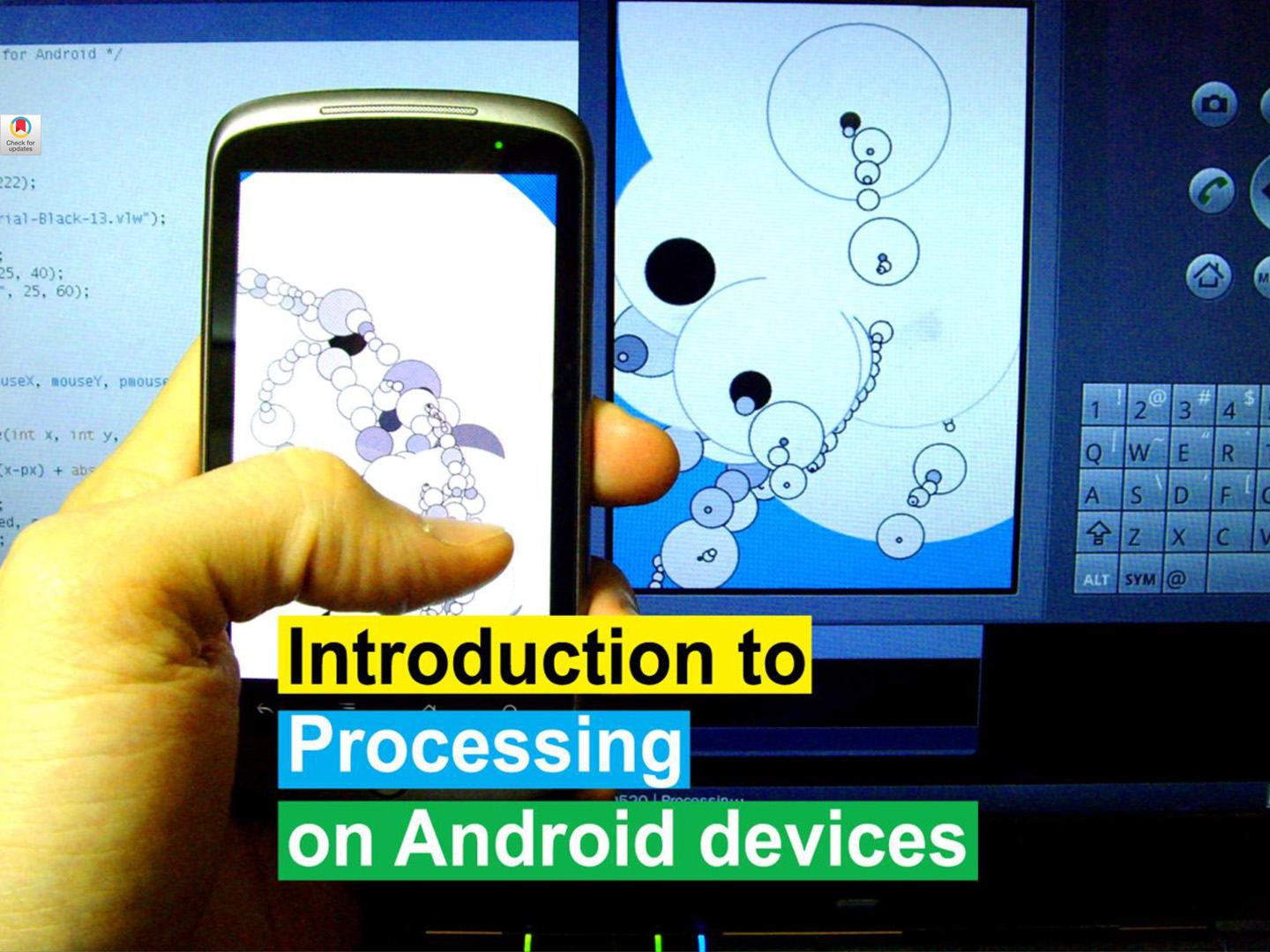“Introduction to Processing on Android Devices” by Kim and Colubri
Conference:
Type(s):
Title:
- Introduction to Processing on Android Devices
Presenter(s)/Author(s):
Abstract:
Processing is a Java-based programming language and environment used as a teaching, prototyping, and production tool for creative media. Many interactive installations, generative art pieces, data visualizations, and physical computing systems have been implemented with Processing. Android, on the other hand, is an operating system and software stack for mobile devices, which is steadily gaining popularity all over the world.
Processing is widely used by designers, artists, students, etc., but until recently it has been limited to the PC and Mac platforms. In early 2010, the port of Processing for the Android OS was initiated. Although it is still at an early stage of development, significant portions of its functionality, such as 2D and 3D rendering, are already usable. The combination of Processing’s simple API and extensible architecture with the unique characteristics of mobile devices and their ubiquitous presence will certainly open up new creative uses of such devices.
This course helps attendees get started with Processing development on Android devices. It introduces the main characteristics of the Android platform, explains how to run simple graphic applications and upload them to the phones, and summarizes the possibilities offered by more advanced features (OpenGL, GPS). Audience comments, questions, suggestions, etc. are encouraged.
Additional Information:
Prerequisites
No prior knowledge of any of the technologies covered. Basic programming experience with any language and experience with JAVA/Processing in particular is helpful. Highly recommended: bring your own laptop and Android phone.





